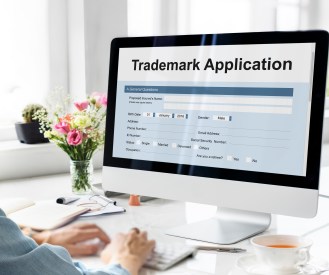 In August, we wrote about the Fair Use defense to copyright infringement that may allow someone to use copyrighted material without permission under certain circumstances. This exception applies most often to educational and/or other non-commercial use of certain copyrighted material. Since copyrights are directed to original works of authorship, the Fair Use defense to copyright infringement applies only to specific situations and under a specific analysis. The potential application of the Fair Use defense in a trademark context is a bit different.
In August, we wrote about the Fair Use defense to copyright infringement that may allow someone to use copyrighted material without permission under certain circumstances. This exception applies most often to educational and/or other non-commercial use of certain copyrighted material. Since copyrights are directed to original works of authorship, the Fair Use defense to copyright infringement applies only to specific situations and under a specific analysis. The potential application of the Fair Use defense in a trademark context is a bit different.
A trademark is a word, phrase, symbol, design, or combination that serves as a source identifier for certain goods and/or services. It could be a company’s name, product or services name, logo, slogan, the distinctive shape of a product, etc. – anything that serves to distinguish a company’s goods and/or services from those offered by others.
Trademark rights are generally derived from the use of the trademark and trademarks also can be registered through the United States Patent and Trademark Office (USPTO). Trademarks are approved for registration on the basis of their distinctiveness and the absence of likelihood of confusion with any other existing trademarks. The general rule is that you shouldn’t use the same or similar trademark in connection with the same or similar goods and/or services You can name your company whatever you want, but if a competitor pops up with the same name, you can’t ask them to change unless your company’s name is trademarked. You can’t use someone else’s trademarked material without their permission.
There is, of course, an exception to the rule. It is the same exception as copyrights, although it functions very differently with trademarks: Fair Use. When it comes to trademarks, there are two different ways Fair Use will allow you to legally use someone else’s trademarks:
- Nominative Fair Use allows you to use someone’s trademark while referring to that same trademark. For instance, McDonald’s has their company’s name trademarked. Other companies cannot name their business “McDonald’s.” However, I can use the name “McDonald’s” when writing the sentence “McDonald’s burgers are very tasty.” This is much easier than writing “The burgers from the famous fast food restaurant with the distinctive M logo are very tasty.”
- Descriptive Fair Use allows you to use someone’s trademark when describing something entirely unrelated. For instance, an apple orchard could name their business “The Apple Store” even though it shares a name with the tech giant’s trademarked retail shop, since the use of the trademarked word is referring to something different. Similarly, a juice company once was allowed to use the term “sweet tart flavor” on its box, since it was not referring to the candy company Sweet Tarts.
As you can see, the opportunities to cite Fair Use are much fewer with trademarks than with copyrights. However, they still allow you to accomplish common tasks without trademarks getting in the way. To protect your own trademarks (or argue any breach was protected by Fair Use,) contact McDermott IP Law today! We protect client innovation!
McDermott IP Law
Latest posts by McDermott IP Law (see all)
- From Creation to Commercialization: The Lifecycle of IP Assets - April 15, 2024



